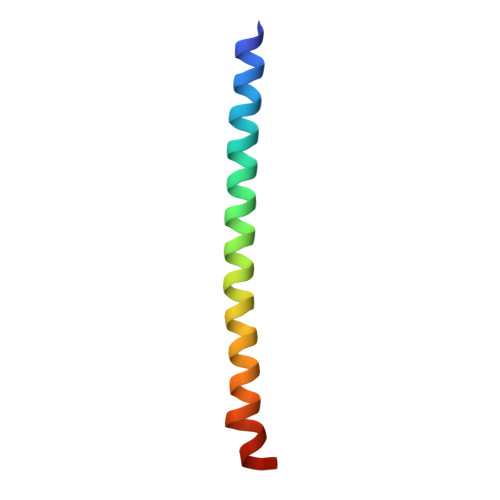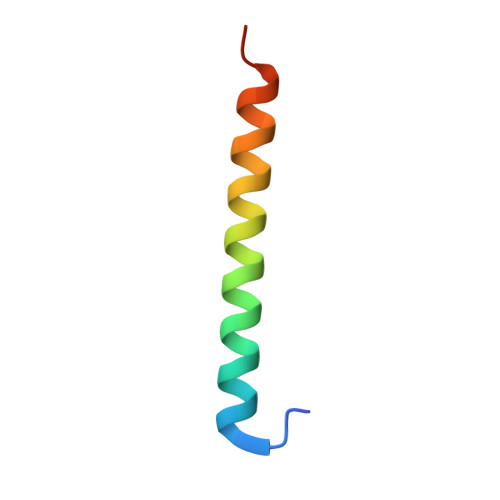Binding of a potent small-molecule inhibitor of six-helix bundle formation requires interactions with both heptad-repeats of the RSV fusion protein.
Roymans, D., De Bondt, H.L., Arnoult, E., Geluykens, P., Gevers, T., Van Ginderen, M., Verheyen, N., Kim, H., Willebrords, R., Bonfanti, J.F., Bruinzeel, W., Cummings, M.D., van Vlijmen, H., Andries, K.(2010) Proc Natl Acad Sci U S A 107: 308-313
- PubMed: 19966279
- DOI: https://doi.org/10.1073/pnas.0910108106
- Primary Citation of Related Structures:
3KPE - PubMed Abstract:
Six-helix bundle (6HB) formation is an essential step for many viruses that rely on a class I fusion protein to enter a target cell and initiate replication. Because the binding modes of small molecule inhibitors of 6HB formation are largely unknown, precisely how they disrupt 6HB formation remains unclear, and structure-based design of improved inhibitors is thus seriously hampered. Here we present the high resolution crystal structure of TMC353121, a potent inhibitor of respiratory syncytial virus (RSV), bound at a hydrophobic pocket of the 6HB formed by amino acid residues from both HR1 and HR2 heptad-repeats. Binding of TMC353121 stabilizes the interaction of HR1 and HR2 in an alternate conformation of the 6HB, in which direct binding interactions are formed between TMC353121 and both HR1 and HR2. Rather than completely preventing 6HB formation, our data indicate that TMC353121 inhibits fusion by causing a local disturbance of the natural 6HB conformation.
Organizational Affiliation:
Tibotec BVBA, B-2800 Mechelen, Belgium. [email protected]

















